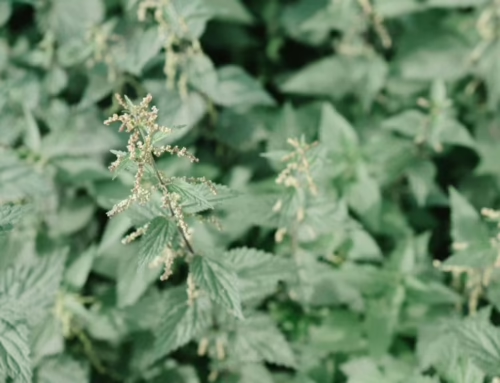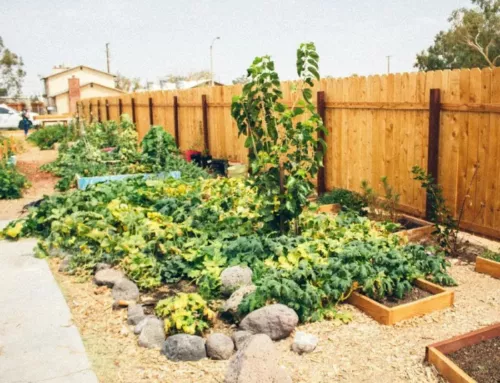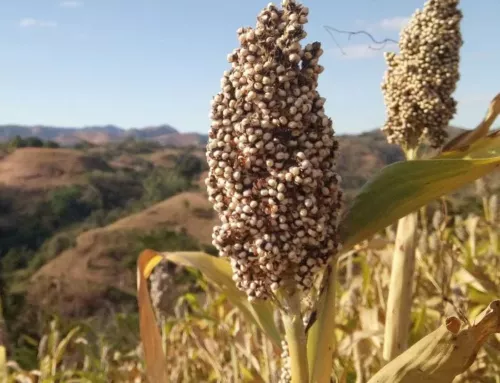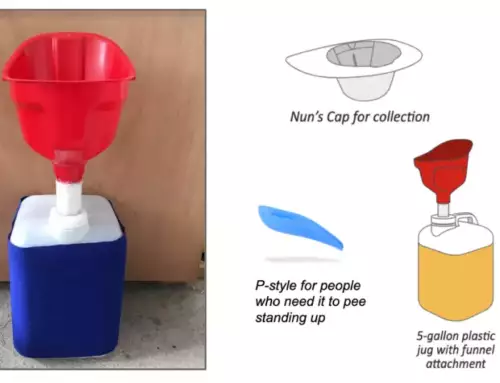By Richard Robinson, Farmer at Hopestill Farm

Soil test results are the key to planning your soil fertility program. Adding the right amendments in the right amount can dramatically improve your plants’ health and your garden’s productivity. But once you have your test results, it can sometimes feel daunting to figure out how much of a particular amendment you need to add to get to your goal–and I say that as a former math and chemistry teacher!
In this article, I will try to greatly simplify that process with a few conversion factors and formulas. With these, you should be able to use your results to easily figure out what you need to order—from the NOFA bulk order or elsewhere—and apply your findings to fine tune your garden’s fertility.
Step 1: Determine your garden’s area in square feet. If it’s rectangular, multiply the length times width.
Example: 100’ long x 40’ wide = 4000 square feet (sf)
Step 2: Convert your garden’s area to acres. Divide your square feet by 43,560 sf/acre.
Example: 4000/43,560=0.092 acres.
Now that you know your garden’s area, it’s time to look at the soil test results. Many of the results you get will be in either parts per million (ppm) or pounds per acre (lbs./acre). The most useful form is usually lbs./acre, so it’s best to convert any ppm results before going any further.
Step 3: Convert any soil test results reported in ppm to lbs./acre
The math gods were smiling on us when they cooked up this conversion factor: ppm x2 = lbs./acre. If your potassium test indicates you have 100 ppm in your soil, multiply by 2 to get the equivalent in lbs./acre.
Example: 100 ppm x 2= 200 lbs./acre.
(It is rare you would need to work backwards from lbs./acre to ppm, but of you do, take your lbs./acre and divide by 2. 200 lbs./acre /2 = 100 ppm.)
Step 4: Determine how much of the ELEMENT you want to add per acre.
This amount is the difference between what you want and what you have. Your soil test will probably indicate the “desired value” (in the words of Logan Labs) or the “optimum range” (from UMass). Following my K example from above, let’s say that the desired value is 380 lbs./acre. So the amount of the element I need to add is:
Example: 380 – 200 = 180 lbs./acre.
If you are beginning with an optimum range given in ppm, be sure to convert it to lbs./acre before doing your subtraction.
Step 5: Determine how much of the ELEMENT you want to add for your garden. To do this, multiply the pounds of ELEMENT per acre by the area of your garden in acres determined in Step 2.
Example: 180 lbs./acre K x 0.092 acres = 16.6 lbs. K
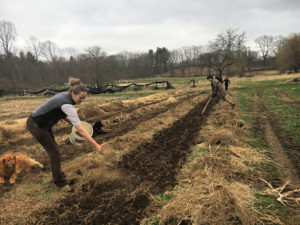
Spread amendments evenly over your garden, then mix it in or cover it with mulch.
Step 6: Determine how much of the AMENDMENT you want to add for your garden. This step is slightly more involved than previous steps, but is not really any more complicated. If you could get pure K for your garden, you’d just add 16.6 pounds of it, and you’d be done (though you’d want to stand back, as it would quickly explode upon hitting the moist soil…). But your amendment is not pure K; it’s a compound that is only part K. Most commonly, it is in the form of potassium sulfate (K2SO4) or “K-Mag,” potassium-magnesium sulfate (K2SO4-2MGSO4).
Intuitively, you can see you need to add more than 16.6 lbs. of amendment to get 16.6 lbs. of K into your garden. Equally intuitively, you can see that if your amendment was 1/4 K by weight, you’d need to add 4×16.6 lbs. The actual fraction of K in the various amendments isn’t quite that neat and tidy, but the principle is the same. We find out how much K is in the amendment, and then flip that to use as our multiplier.
Finding those multipliers involves consulting the periodic table of the elements and adding up the elements in each compound, but there is no need for every member of NOFA to do that on their own. A simple table of multipliers (below) can be used as long as you are using the amendment shown. Use the K2SO4 multiplier for K2SO4, but not for K-Mag!
| Element | Compound | Formula | Weight | Percent Element | Multiplier |
| B | Borax | Na2B4O7-10H2O | 382 | 11% B | 9.1 |
| Ca | Gypsum | CaSO4-2H2O | 172 | 23% Ca | 4.3 |
| Ca | Calcium carbonate | CaCO3 | 100 | 40% Ca | 2.5 |
| Cu | Copper sulfate | CuSO4-5H2O | 250 | 25% Cu | 4 |
| K | Potassium sulfate | K2SO4 | 174 | 45% K | 2.2 |
| K | K-mag | K2SO4-2MgSO4 | 319 | 24% K | 4.2 |
| Mg | K-mag | K2SO4-2MgSO4 | 319 | 15% Mg | 6.67 |
| Mg | Epsom salts | MgSO4-7H20 | 246 | 10% Mg | 10 |
| Mn | Manganese sulfate | MnSO4-H2O | 168 | 33% Mn | 3 |
| Zn | Zinc sulfate | ZnSO4/7H2O | 287 | 23% Zn | 4.3 |
So, if we want to add 16.6 lbs. of K to our garden, how much K2SO4 do we need? We use the multiplier 2.2.
Example: 16.6 lbs. K x 2.2 = 36.5 lbs. K2SO4.
If instead we were using K-Mag, the multiplier for K is 4.17.
Example: 16.6 lbs. K x 4.17 = 69.2 lbs. K-Mag.
And that’s it—spread that evenly over your garden, mix it in or cover it with mulch, and your plants will thank you.
This same process can be used for any other element on your soil test: Find your desired amount of ELEMENT to add per acre, multiply by your garden’s acreage, then multiply by your AMENDMENT’s multiplier.

